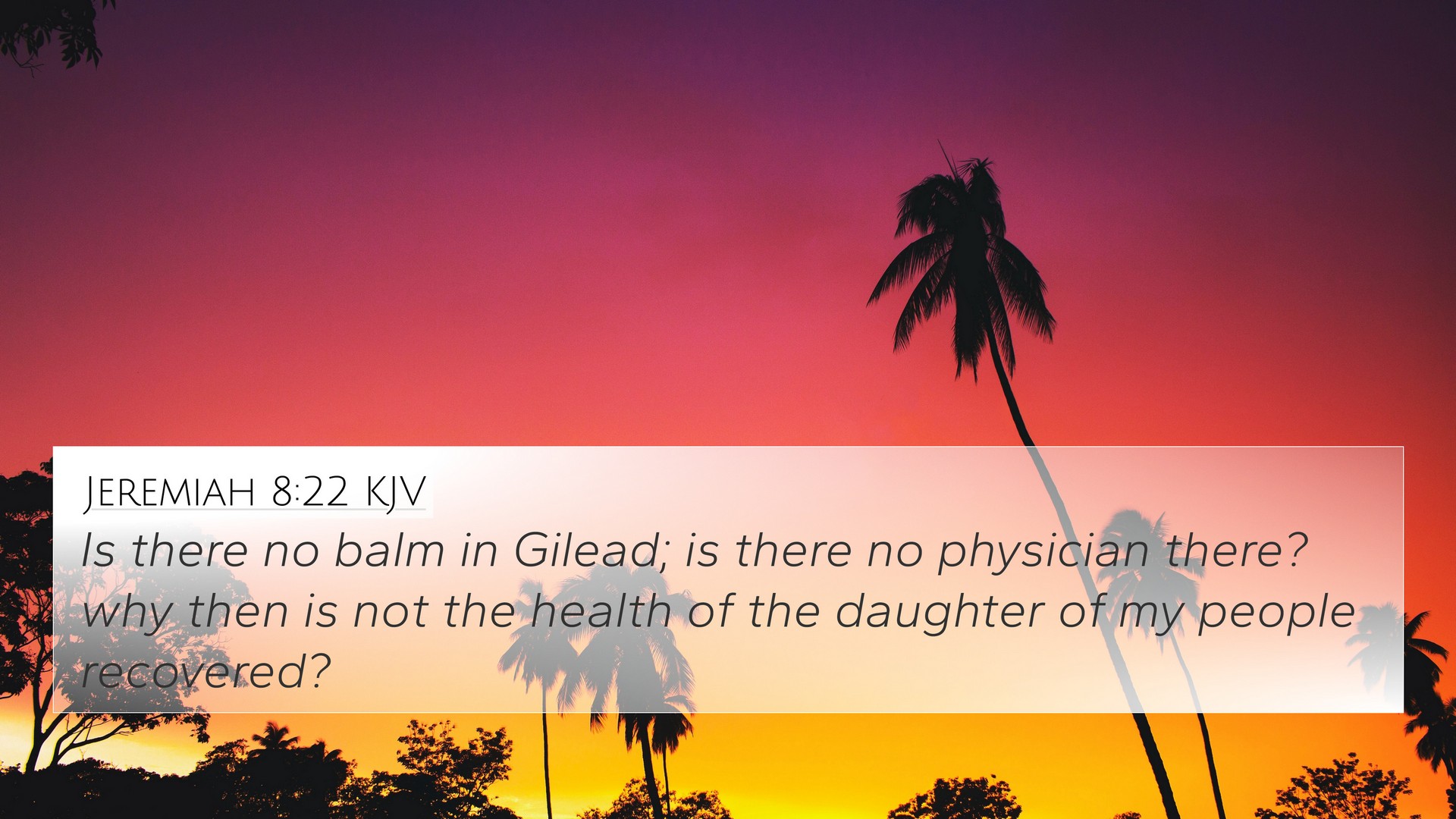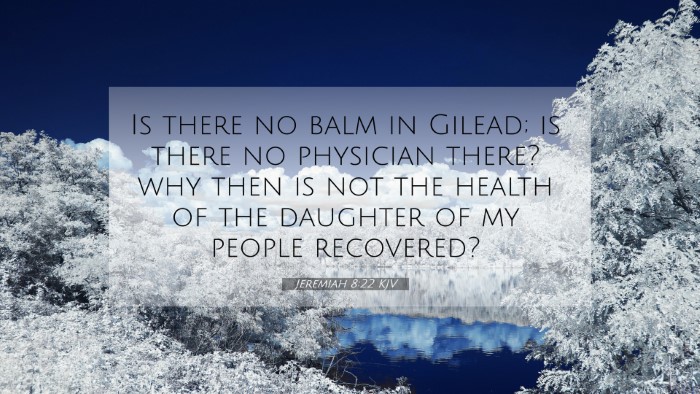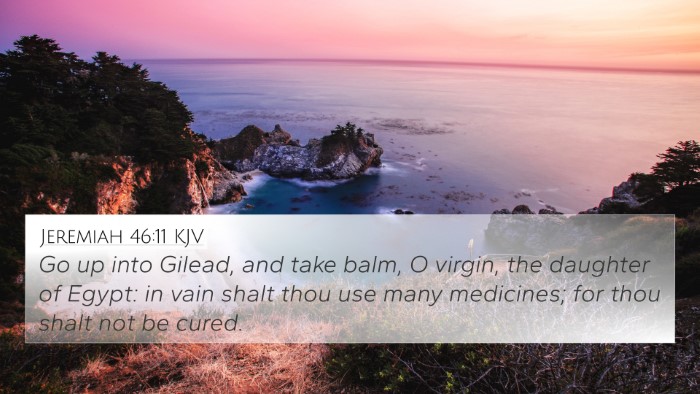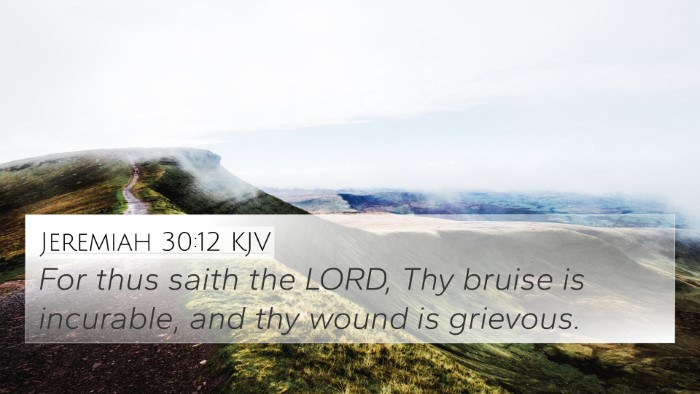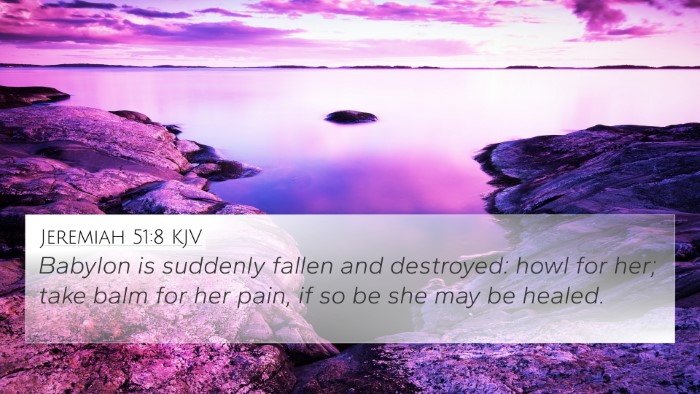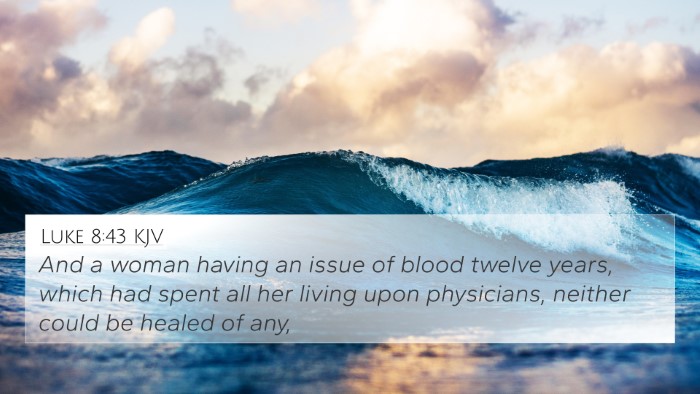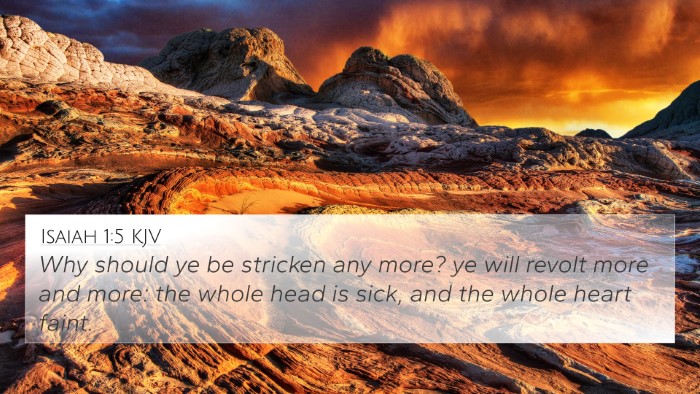Understanding Jeremiah 8:22
Verse: "Is there no balm in Gilead? Is there no physician there? Why then is not the health of the daughter of my people recovered?" - Jeremiah 8:22
This verse expresses deep sorrow and a sense of hopelessness concerning the spiritual and physical condition of God’s people. Jeremiah, the prophet, is lamenting over the unresponsive state of Israel, comparing their need for healing to the availability of balm and a physician.
Commentary Insights
- Matthew Henry:Henry emphasizes the metaphorical use of balm and the physician, suggesting that God is the ultimate healer and that Israel’s suffering could be alleviated through repentance and turning back to Him.
- Albert Barnes:Barnes reiterates that Gilead was known for its healing balm, symbolizing the spiritual resources available to the people. The lack of healing signifies their unrepentant hearts and the distance from divine aid.
- Adam Clarke:Clarke highlights the rhetorical nature of the questions posed in this verse, pointing out that God's remedies are available, yet the people fail to seek them, indicating willful ignorance or rebellion.
Thematic Connections
The verse serves as a poignant reminder of the themes of healing, repentance, and the accessibility of God’s grace. The balm in Gilead represents God’s readiness to heal and restore those who seek Him.
Bible Cross-References
- Genesis 37:25: "And they sat down to eat bread: and they lifted up their eyes and looked, and, behold, a company of Ishmaelites came from Gilead; their camels bearing spicery and balm..." - showing the renowned healing balm of Gilead.
- Jeremiah 46:11: "Go up into Gilead, and take balm, O virgin, the daughter of Egypt: in vain shalt thou use many medicines; for thou shalt not be cured." - further emphasizes Gilead's balm.
- Isaiah 53:5: "But he was wounded for our transgressions, he was bruised for our iniquities: the chastisement of our peace was upon him; and with his stripes we are healed." - connects to the theme of healing as a divine provision.
- Psalm 147:3: "He healeth the broken in heart, and bindeth up their wounds." - underscores God’s role as a healer.
- James 5:14: "Is any sick among you? let him call for the elders of the church; and let them pray over him, anointing him with oil in the name of the Lord." - reflects the New Testament theme of healing in prayer.
- Matthew 9:12: "But when Jesus heard that, he said unto them, They that be whole need not a physician, but they that are sick." - alluding to the need for spiritual healing.
- Mark 2:17: "When Jesus heard it, he saith unto them, They that are whole have no need of the physician, but they that are sick: I came not to call the righteous, but sinners to repentance." - reinforcing the need for recognizing one’s own spiritual condition.
Applications for Study
This verse invites believers to reflect on their own spiritual health and their relationship with God. It challenges readers to consider: Are we seeking divine healing and restoration, or are we neglecting the balm that is freely available?
To delve deeper, utilize Bible concordance and other Bible reference resources to explore the interconnections of scripts that highlight Bible verse parallels and themes of healing and repentance.
Further Study and Exploration
For those interested in cross-referencing Biblical texts, tools like a Bible cross-reference guide can be invaluable for tracing thematic links across the Scriptures. Identifying connections between Old and New Testament verses enhances understanding of God's redemptive plan.
An enriching cross-reference Bible study method could involve taking a selected theme from Jeremiah 8:22 and exploring its implications in other Scriptures, creating an inter-Biblical dialogue.
